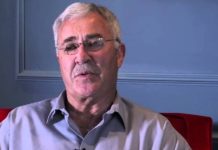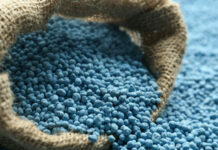
[miningmx.com] — A WAR of words has erupted over the merits of
suitable technologies for the treatment of acid mine drainage after one of South
Africa’s foremost experts – who had previously advised government on the issue –
was accused of standing in the way of a much-needed solution due to vested financial interests.
It started when Professor Anthony Turton – a renowned scientist specialising in water resource management – criticised veteran journalist of business daily Sake24 Jan de Lange, who also contributes to Miningmx, for writing in favour of the acid mine drainage proposals of Western Utilities Corporation.
De Lange wrote in an earlier column (summary):
There is a real danger that all the groundwater sources in the Central Basin, which
stretch from Roodepoort in the west to Benoni in the east, will in the coming months be polluted by acid mine water to the level of being permanently spoiled; that a “temporary solution’ will cost the taxpayer R3.5bn now, but that will still only lead to a slightly lesser level of pollution in the Central and Western Basin river systems.
The danger would have been completely resolved by the middle of this year with a
thoroughly researched and tested engineering proposal by Western Utilities
Corporation (WUC) – a British-controlled company that was formed thanks to South
African gold producers – and it would not have cost the state a cent.
Ideological claptrap over the so-called privatisation of water and quasi-scientific
arguments about the mining industry halted the WUC proposal.
DESERVED TO BE CHALLENGED
In response, Turton said on a Facebook group called Water Users South Africa that De
Lange’s piece deserved to be challenged.
“The WUC proposal represents the mining industry at its very worst, again seeking to
pass on liabilities to the ignorant consumer,’ he said.
“In essence, the WUC deal uses the lowest cost technology to “treat’ hazardous waste
and then sell it onto 11 million consumers of Rand Water’s product without any
consultation with the public.
“Government got it right [by rejecting the proposal] in this case and they deserve our
full support, because they protected our interest.
“The WUC deal also made use of a legal loophole to magically make the hazardous
precipitate [radio nuclides and heavy metals] disappear off the balance sheet. This is
done by exploiting the legal definition of mine “waste’ as “spoil’, thus evading the
hazardous waste legislation for the dumping of radioactive precipitate.
“I spoke with a German engineering company specialising in such matters, and they
assured me that this would be the single largest cost of the treatment process, now
magically taken off balance sheet, allowing it to become “profitable’.
“Furthermore the WUC deal would guarantee a 17% internal rate of return using a BEE
partner – in perpetuity – so not only would the mines be avoiding their liability, but
they would handsomely profit from their scheme. You can judge the morality of this, if
indeed morality has any place in such a debate.
“In my view this represents the mining industry at its arrogant worst, and as long as I
have breath in my body I will oppose this venture.
“In fact I have urged both the Ministry and the Presidency to be wary of this proposal,
saying that it is tantamount to the Arms Deal in the Water Sector.
UNTRUE
In a follow-up response, De Lange said Turton’s claims over WUC’s lack of
consultation were untrue.
“Minutes show that about 20 consultation meetings were held between March and July
2009,’ he wrote.
“Several of them were public meetings that were widely advertised in advance.
National and provincial departments and non-government organisations attended
them.
“The minutes of this public-participation process show that more than 860 comments
and proposals by outside organisations and people were received in reply to the
invitations.
He wrote the technology proposed by WUC – known as the alkali-barium-calcium
process – was developed by the Council of Scientific and Industrial Research.
“The process has been evaluated by at least 20 scientists, including Prof Jannie
Maree, an analytical chemist and holder of the Rand Water chair for water utilisation
at the Tshwane University of Technology in Pretoria,’ wrote De Lange. “Maree is in
this chair because he is regarded by scientists as the country’s leading expert on this
subject.
“He was requested to provide Sake24 with several scientific articles about the
matter, which not only set out the safety levels of the water, but also explain clearly
why the process is affordable.
“The process differs from the Anglo Coal and BHP Billiton project in Witbank, which
uses reverse osmosis. In this process, polluted water is filtered through a fine
membrane. It has been used for several years already to purify the water to potable-
water level. It is sold, but at subsidised prices, financed by the two mining giants.
The waste product is gypsum.
“The gypsum can be chemically processed to separate the sulphur [something that
South Africa imports] from calcium carbonate [lime]. Both products have commercial
value and need therefore not to be dumped. However, this requires a second
treatment of the waste [gypsum] after the process of reverse osmosis.
“The CSIR’s process that the WUC wants to use purifies the water and recovers useful
by-products like sulphur, metals and calcium carbonate in a single chemical process.
“Maree feels the latest developments in the ABC process, in which an SBR [sequential
batch reactor] is used to neutralise the acid in the water in advance, halves the
operating cost of an ABC project when compared with the reverse-osmosis technology
of the collieries.
“This is scientific excellence – no loophole in any law.’
VESTED INTEREST
De Lange continues by saying Turton’s opposition to the WUC process could be
explained by the expert’s involvement in Trailblazer Technologies, a young upstart
that is busy developing technology for the treatment of polluted mine water.
He quotes Trailblazer’s John Bewsey admitting the company could be in direct
competition with WUC, but still far from proving the efficiency and safety of its
process.
TURTON RESPONDS
“I am not opposed to WUC simply so I can make a fast buck myself by promoting an
alternative.
“Rather, I am opposed to WUC for a number of technical reasons, one of which relates
to risk.
“In essence [the WUC process] takes highly contaminated water laced with a cocktail
of heavy metals, radio nuclides [bits of radioactivity] and salts, and it seeks to clean
that water by applying a process. The process selected is a precipitation process,
which is very robust but also very crude.
“In short, it changes the pH of the water from highly acidic to moderately alkaline,
during which the suspended material precipitates out as sludge. The sludge is now
rich in heavy metals, radionuclide’s and salts, and this needs to be managed.
“The mildly alkaline water is then adjusted to a neutral pH to make it “potable’ for
onward delivery to the consumer via the Rand Water reticulation system. That is the
grand plan.
“Two things are relevant here.
“Firstly, the sludge needs to be disposed of as it is concentrated nasty material. This
is done by dumping it on a tailings dam where it magically disappears using a legal
loophole in the mining legislation that classifies mine residue as spoil and thus not
as waste to be managed by means of NEMA.
“This is sleight of hand, because it does not disappear. It only disappears off the
WUC balance sheet, but it remains on the dump to be later mobilised by wind and
rain to re-enter the cycle.
“It is therefore not a permanent solution as they claim, and accounts for the major
portion of their operating cost if it were to be recognised on the balance sheet.
“Secondly, the water – now devoid of the suspended material – needs to be sold for
cash to pay for the process. This is where my major opposition lies, because it is to
be sold as drinking water to 11 million consumers who have not been adequately
informed of the risk.’
TRAILBLAZERS
As for his involvement in a possible competitor to WUC, Turton admitted his
company, TouchStone Resources, was a venture capital firm which could invest in
Trailblazers Technology in future.
“We agreed that TouchStone Resources believed Trailblazer Technology had potential
for a wide market, mostly in agriculture, but also potentially in the management of
sewage effluent and acid mine drainage.
“Secondly, we agreed that TouchStone Resources would take an equity stake in the
company after Trailblazer Technologies demonstrated the technology.
“So, in essence, the agreement is that if the technology works, which is still to be
proven, then TouchStone Resources will raise VC to take the technology from concept
through to production.’
Turton said the economics of the technology, if it was capable of delivering what the
inventor claimed it could do, would be such that three major outcomes would be
achievable in the acid mine drainage space.
“The first is that the AMD decant will be treated in a sustainable manner at no
additional cost to the consuming public already angered by the toll fees and other
additional taxes passed on by Government.
“The second is the most important however, because this means that the water need
not be sold for potable purposes to 11 million consumers of Rand Water.
“The third is that the treated water can be left in the rivers, but now in a safe
condition, where it can become the foundation of a new ecotourism industry capable
of creating jobs to replace those lost by the closure of the mining sector and the
general collapse of the local economies post-mine closure.’









